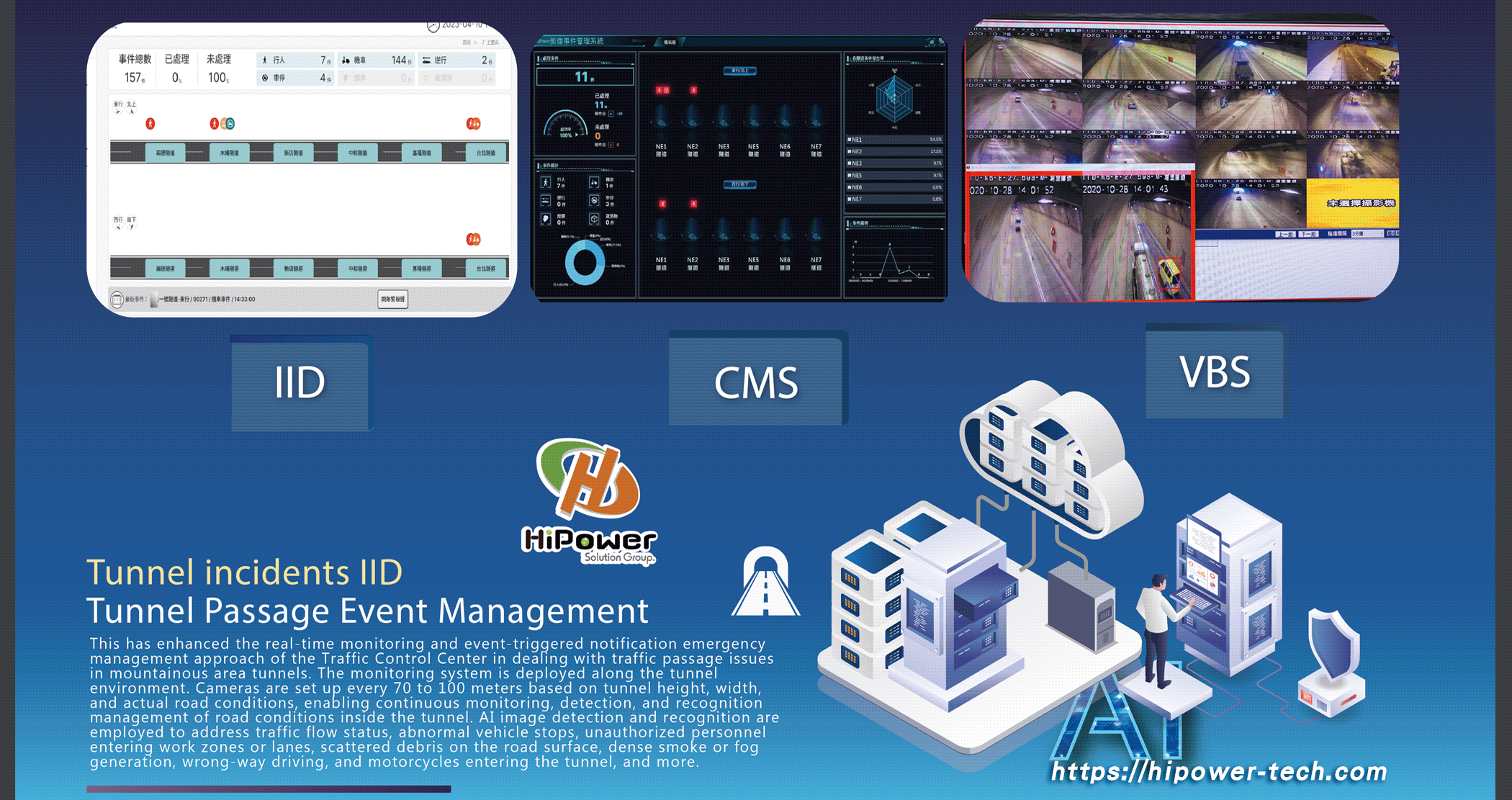Solution

Hipower Solution
IIDS -Tunnel Incident Information Detection
◆ A centralized dashboard displaying live AI analysis and controls for different city sectors like transportation, parking, security, and logistics
◆ A dashboard featuring BI analytics, data integration services, and AI image recognition results, contributing to a smarter decision-making process
☁ On site Fiber
☁ Private Network
☁ GCB「Government Configuration Baseline」
☁ AI Incident Detection
IIDS -Tunnel Incident Information Detection
Application Areas
To improve traffic safety, optimize transportation operations, enhance traffic efficiency, and reduce environmental energy consumption and carbon impact.
Traffic Flow Monitoring
Violation Detection
Mountainous Area Traffic Monitoring
Traffic Diversion and Incident Management
Performance Assessment of Traffic Segments
Graphic Display Management
IIDs-Tunnel Safety Incident Detection Video
Enhancing the Traffic Control Center's real-time and precise monitoring and response capabilities for tunnel traffic enables more effective improvement in tunnel traffic safety and management efficiency.
Benefits
Real-Time Monitoring and Event Trigger Notification
Event Detection and Recognition
Fiber Optic Network Real-Time Streaming
Using fiber optic networks to transmit real-time image streams to the central management platform ensures stable and immediate image transmission, allowing management personnel to promptly assess the tunnel's interior conditions.
Event-Triggered Image Pop-Up Display
Assisting Traffic Planning and Decision-Making
Enhancing Control Center Efficiency
IIDS -Tunnel Incident Information Detection
Application Actual Cases
IIDS
IIDS
IIDS
IIDS
IIDS
IIDS
IIDS
IIDS
Tunnel Event
Tunnel Event
Tunnel Event
Tunnel Event
Tunnel Event
Tunnel Event
Tunnel Event

Tunnel Event
Tunnel Event
Tunnel Event